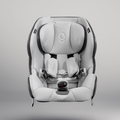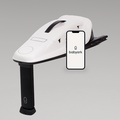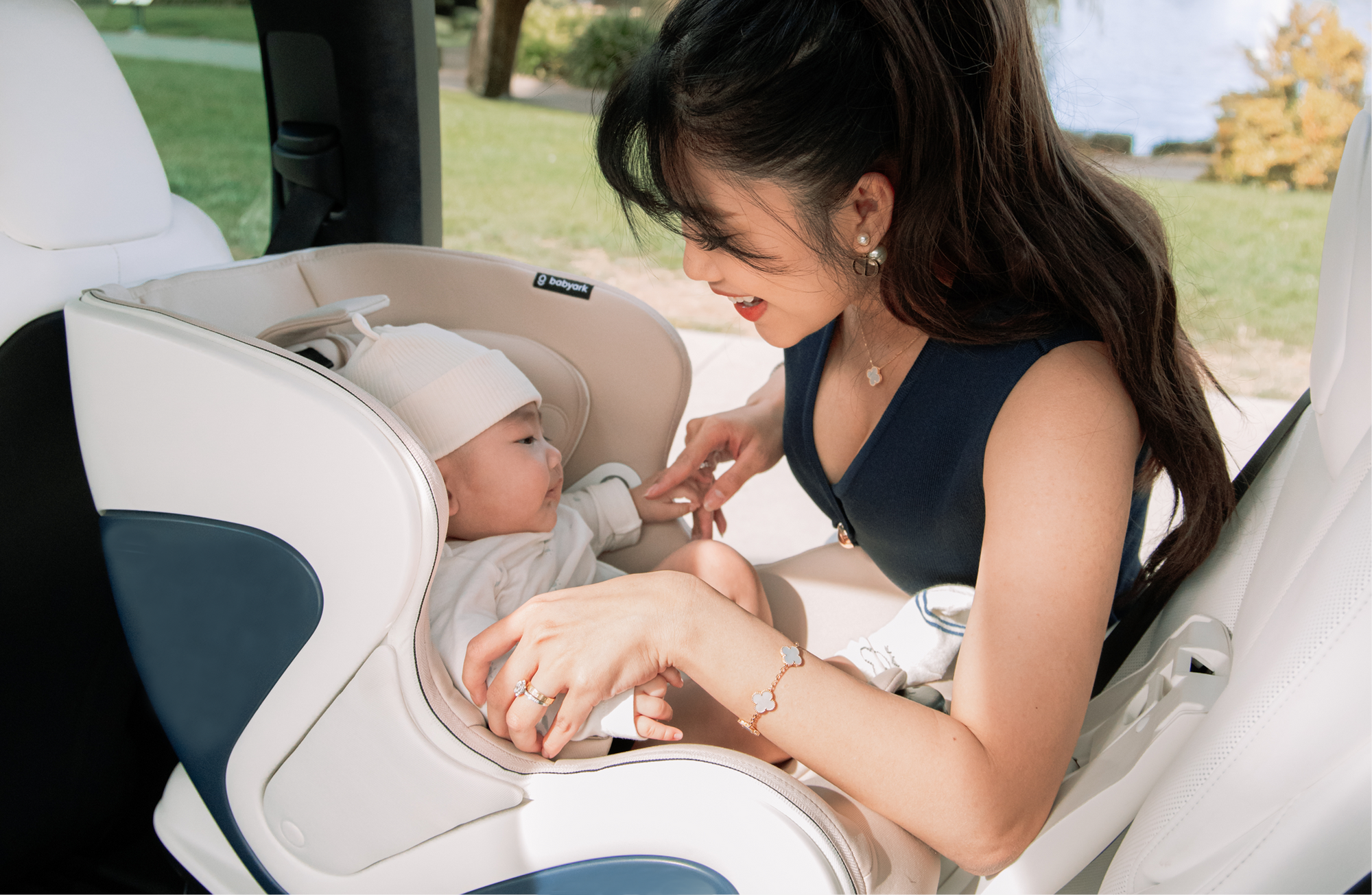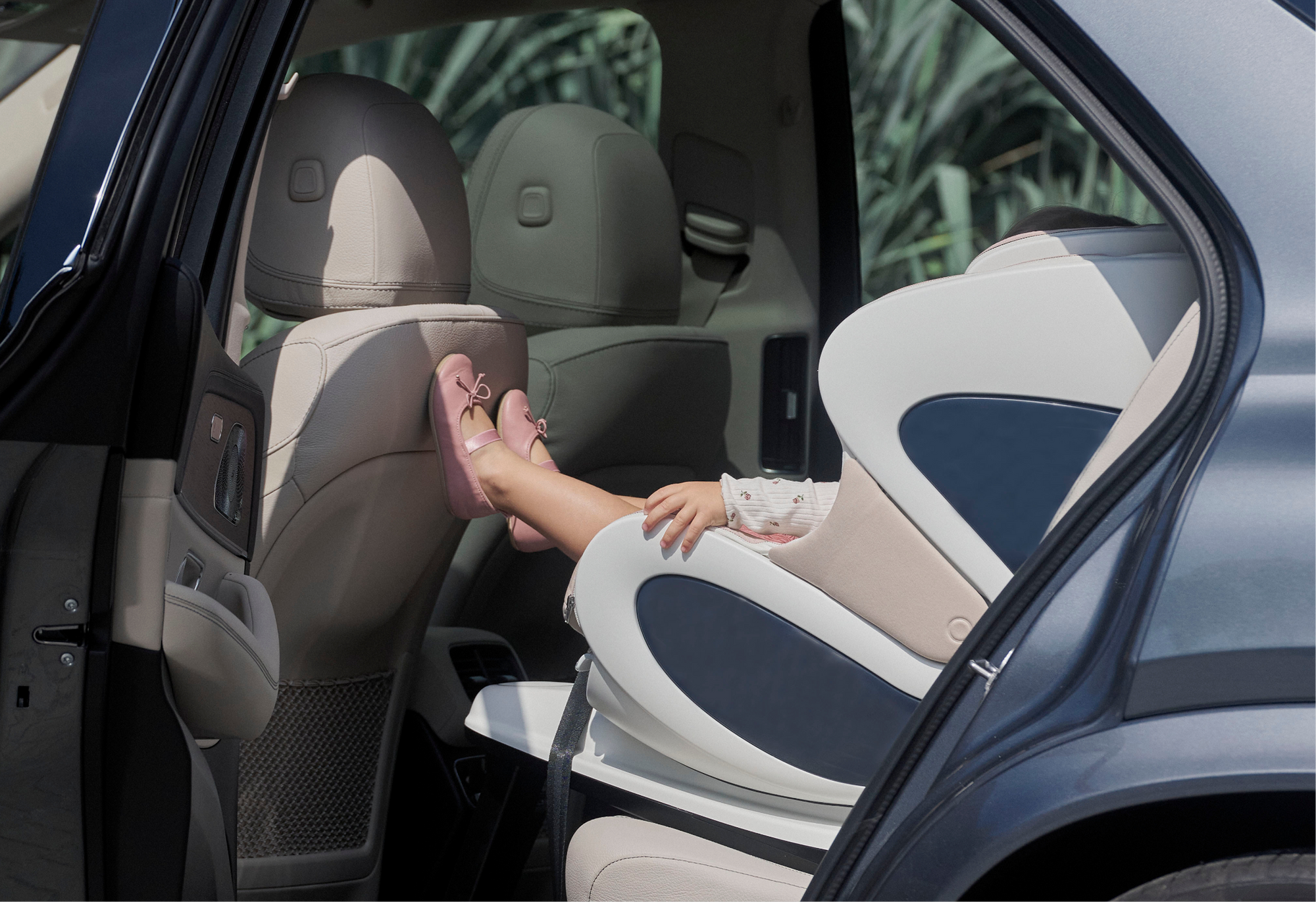Why Rear-Facing Car Seats Are Safer for Longer: The babyark Advantage
As parents, we all want what’s best for our children, especially when it comes to safety. One of the most important decisions you’ll make in your child’s early years is whether to keep them in a rear-facing car seat—and for how long. Research shows that keeping your child rear-facing for as long as possible is the safest option, but many parents aren’t aware of just how important this is.
At babyark, we believe in extending the rear-facing stage to give your child the best protection possible. Let’s explore why rear-facing car seats are safer and how babyark’s innovative features make rear-facing longer an easy choice.
Why Rear-Facing Is Safer for Your Child
When a car crash occurs, the impact forces can be incredibly dangerous, especially for young children. In a rear-facing car seat, the seat cradles your child’s entire back, neck, and head, distributing crash forces evenly across the body. This greatly reduces the risk of serious injury, particularly to the head and spine, which are still developing in young children.
Here’s why rear-facing is safer:
- Better Protection for the Head, Neck, and Spine: In a rear-facing position, your child’s head, neck, and spine are aligned, reducing the risk of whiplash or head injuries in the event of a crash. The car seat absorbs the majority of the crash force, protecting these vulnerable areas.
- Energy Distribution: Rear-facing seats distribute the force of the crash over the entire body, reducing the impact on specific areas like the chest or abdomen, which can be injured in a forward-facing seat.
- Crash-Test Results: According to the National Highway Traffic Safety Administration (NHTSA), children under the age of 2 are 75% less likely to be injured in a crash when seated rear-facing.
How Long Should Your Child Stay Rear-Facing?
So, how long should your child stay rear-facing? The American Academy of Pediatrics (AAP) recommends keeping children rear-facing for as long as possible, until they reach the height or weight limits of their car seat. For most children, this will be around the age of 2, but many seats, like babyark, are designed to allow for rear-facing use well beyond that.
The key is to focus on your child’s weight and height, not just their age. babyark's convertible car seat allows children to stay rear-facing up to 50 pounds, meaning your child can benefit from the added protection of rear-facing well into their toddler years.
The babyark Advantage: Extending Rear-Facing Safety
At babyark, we’ve designed our car seats with extended rear-facing safety in mind. Here’s how babyark offers superior protection during the crucial rear-facing stage:
- Rear-Facing Weight Limit of 50 Pounds: babyark’s convertible car seats are designed to allow your child to comfortably stay rear-facing longer, up to 50 pounds, which far exceeds the limits of many other car seats. This means you don’t need to rush to switch to forward-facing as soon as your child turns 2. You can keep them safer for longer.
- SafeCoil™ Energy Absorption: In the event of a crash, babyark’s SafeCoil™ technology absorbs the forces of the collision, reducing the impact on your child’s body. This extra layer of protection is particularly important in rear-facing mode, where the seat is working hard to shield your child from crash forces.
- Anti-Rebound Bar for Rear-Facing Stability: babyark’s anti-rebound bar is another crucial feature that enhances rear-facing safety. It prevents the seat from rotating toward the back of the car in the event of a crash, reducing the chances of whiplash and head injury.
- App-Guided Installation: Proper installation is key to ensuring rear-facing safety. babyark’s smart app provides step-by-step installation guidance with real-time feedback, so you’ll always know your seat is installed correctly.
Common Misconceptions About Rear-Facing Car Seats
Despite the proven safety benefits, many parents choose to switch to a forward-facing seat too soon due to common misconceptions. Let’s clear up a few:
-
Myth 1: “My child looks uncomfortable rear-facing”
Reality: While it may seem like your child’s legs are cramped, children are much more flexible than adults. They can comfortably sit with their legs crossed or resting on the back seat without issue. The safety benefits of rear-facing far outweigh concerns about legroom. What looks uncomfortable to us is probably much more comfortable to them. We all know that they feel free to complain if they're unhappy 😉 - Myth 2: “My child is too big to stay rear-facing”
- Reality: It’s all about the weight limit. As long as your child is within the height and weight limits of the car seat, they are safe to stay rear-facing. babyark’s 50-pound limit ensures that even larger toddlers can remain rear-facing.
-
Myth 3: “It’s okay to switch to forward-facing after age 2”
Reality: While 2 years old is often seen as the milestone for switching to forward-facing, it’s actually safer to keep your child rear-facing for as long as they meet the height and weight requirements.
Back is better
When it comes to your child’s safety, rear-facing car seats are the gold standard. babyark makes it easy to keep your child rear-facing longer with a weight limit of 50 pounds and advanced safety features like SafeCoil™ energy absorption and an anti-rebound bar.
So, take your time when it comes to transitioning to forward-facing—your child’s safety is worth it. And with babyark, you can keep them safer, longer.





